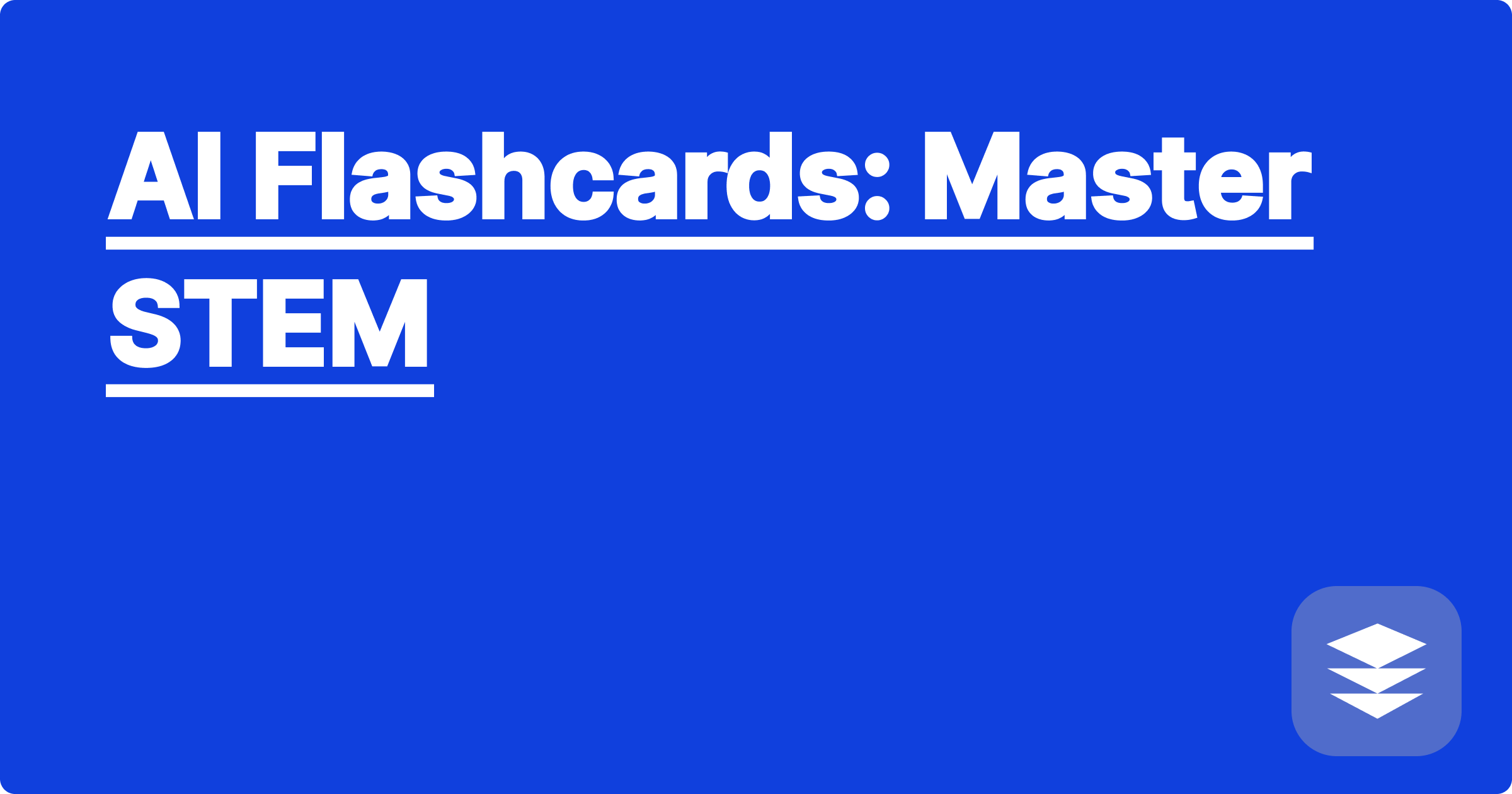
The world of STEM is a demanding one, requiring immense dedication, critical thinking, and a relentless pursuit of knowledge. From complex mathematical equations to intricate biological processes, the sheer volume of information can feel overwhelming. Traditional study methods, like rote memorization and endless note-taking, often fall short, leaving students feeling frustrated and burnt out. But what if there was a way to supercharge your learning, making the process more efficient, personalized, and even enjoyable? Enter the world of AI-powered flashcards and personalized learning tools, designed to help you master STEM subjects with greater ease and effectiveness.
This isn't just about memorizing facts anymore; it's about understanding the underlying concepts, applying them to real-world problems, and developing the critical thinking skills essential for success in STEM fields. For students struggling to keep up with the pace of their coursework, researchers grappling with massive datasets, or even professionals seeking to upskill, AI-powered learning offers a transformative solution. This blog post will delve into the practical applications of AI tools, offering specific strategies and showcasing lesser-known resources that can revolutionize your STEM learning journey. We’ll explore how these tools can not only boost your academic performance but also equip you with the skills needed to thrive in a rapidly evolving technological landscape.
The traditional approach to STEM education often involves passively absorbing information through lectures and textbooks. This can lead to superficial understanding and a lack of practical application. Furthermore, the pace of learning is often dictated by the curriculum, leaving little room for personalized learning paths. Students may struggle to identify their weaknesses and address them effectively. Researchers face similar challenges, often spending countless hours sifting through mountains of data and literature. The need for efficient and personalized learning tools has never been greater. These tools must go beyond simple memorization and facilitate deep understanding, critical thinking, and problem-solving skills.
AI-powered flashcards and personalized learning platforms offer a dynamic and adaptive approach to STEM education. Unlike traditional flashcards, these intelligent tools can analyze your learning patterns, identify your strengths and weaknesses, and tailor the learning experience to your specific needs. Imagine having a virtual AI partner, a GPAI, that understands your learning style and guides you through the material in a way that resonates with you. Your GPAI can curate personalized study plans, provide targeted feedback, and even simulate real-world scenarios to test your understanding. Tools like Wolfram Alpha can assist with complex calculations and provide step-by-step solutions, freeing up your cognitive resources to focus on understanding the underlying concepts.
Implementing AI-powered learning into your workflow is surprisingly simple. First, identify your specific learning goals and the areas where you need the most support. Are you struggling with a particular subject, preparing for an exam, or conducting research on a specific topic? Once you've identified your needs, explore the various AI-powered learning platforms and tools available. For example, if you're a biology student, you might consider using a specialized AI tool that analyzes biological data and provides personalized insights. If you're a physics student, a physics simulation AI could be invaluable. Integrate these tools into your daily study routine, using them to supplement your traditional learning methods. Regularly review your progress and adjust your learning strategy as needed, leveraging your GPAI for guidance and support.
Let's say you're a chemistry student struggling to grasp the concept of chemical equilibrium. Instead of passively reading your textbook, you can use an AI-powered learning platform like Wolfram Alpha to visualize the equilibrium constant and explore how different factors affect the reaction. You can input specific values and observe the changes in real-time, gaining a deeper understanding of the underlying principles. As another example, imagine you're a researcher working on a project involving large datasets. Instead of manually analyzing the data, you can use a specialized AI tool to identify patterns, correlations, and anomalies, saving you valuable time and resources. By combining these tools with personalized learning plans generated by your GPAI, you can optimize your learning and research process, maximizing your efficiency and productivity.
To truly harness the power of AI in STEM, it's crucial to develop effective strategies for integration. Use your GPAI not just for flashcards, but as a research assistant, a study planner, and even a brainstorming partner. Ask your GPAI to help you break down complex concepts, find relevant research papers, or even generate practice questions. Explore lesser-known AI tools like Semantic Scholar for literature reviews or specialized platforms like BioCyc for pathway analysis in biochemistry. Don't be afraid to experiment with different tools and platforms to find what works best for you. Track your progress and analyze how different AI tools contribute to your learning outcomes. By actively engaging with these tools and incorporating them into your daily workflow, you can transform your STEM learning experience.
In conclusion, AI-powered learning tools offer a transformative approach to STEM education and research. By embracing these technologies and developing effective strategies for integration, you can overcome the challenges of traditional learning methods and unlock your full potential. Don’t just passively consume information; actively engage with it, explore new tools, and personalize your learning journey. Start exploring the world of AI-powered learning today and discover the incredible impact it can have on your academic and professional success. The future of STEM learning is here, and it's powered by AI.